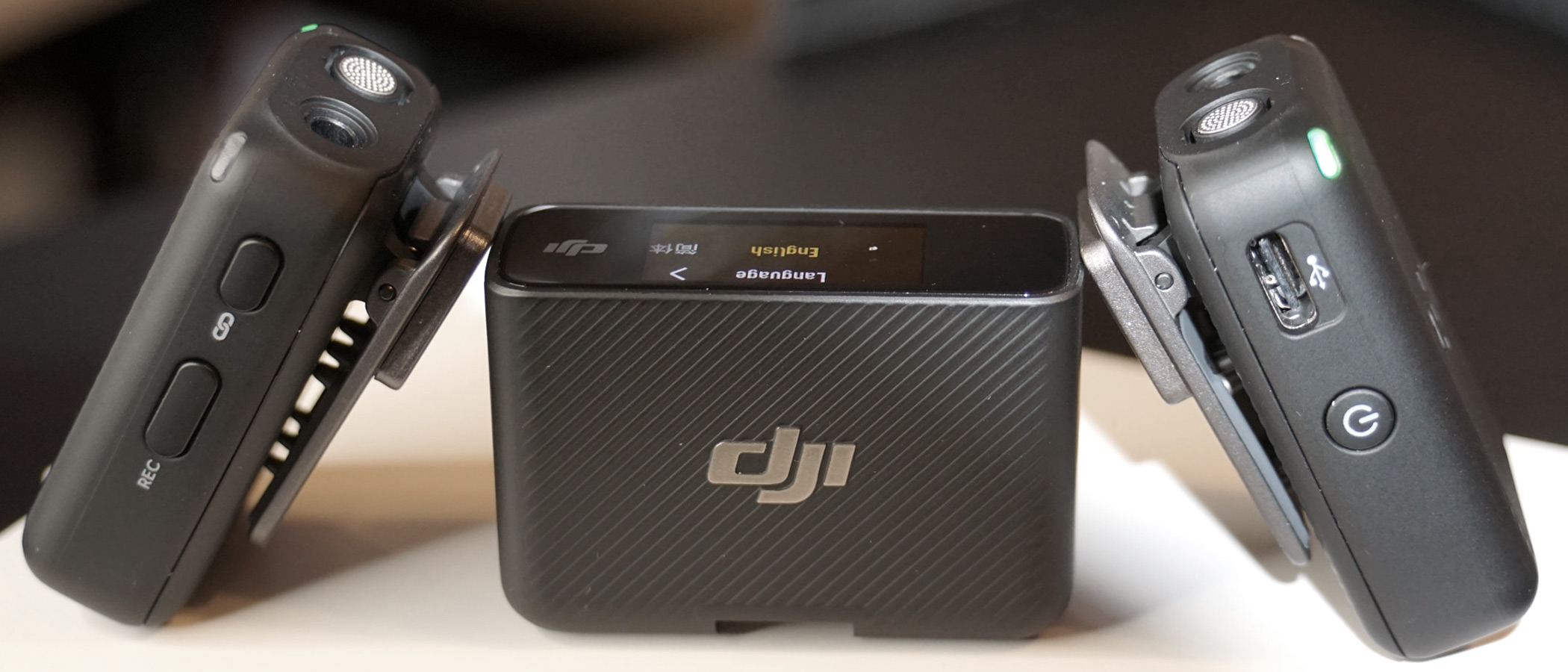TechRadar Verdict
An excellent dual wireless mic system that anyone can use with almost any camera or smartphone.
Pros
- +
Great design
- +
Excellent sound
- +
Quite sensitive
- +
Attaches anywhere
- +
Can be hidden
- +
On-board storage and battery
- +
Reasonable price
Cons
- -
Case magnets are a bit over-eager
- -
Mono-recording only on iPhone
Why you can trust TechRadar
Sometimes, I think DJI has a little bit of Apple in it. It doesn't just make powerful tech gear like drones, tiny gyroscopic cameras, and action cams, it often builds beautiful, intriguing, and smartly-turned out products.
DJI Mic is another one of these products, blending Bauhaus looks with surprising power and mostly excellent usability.
When it comes to videos, people often talk about image quality, but if your audience can't hear or understand you, you might as well skip making the video. Getting audio right, however, isn't easy. You need a good mic (or two) and solid connections to your camera (iPhone, regular video camera, or DSLR). A wired connection is best but then you have to deal with the length of the cord. Can you freely move in front of the camera? Raise your hand if you've almost accidentally pulled your iPhone and tripod to the ground with one sweeping gesture.
What you want are wireless mics, but those are expensive and take some expertise to set up and use. What you can get now is the DJI Mic, a dual-channel wireless microphone system that puts everything inside a portable and quite attractive little charging box.
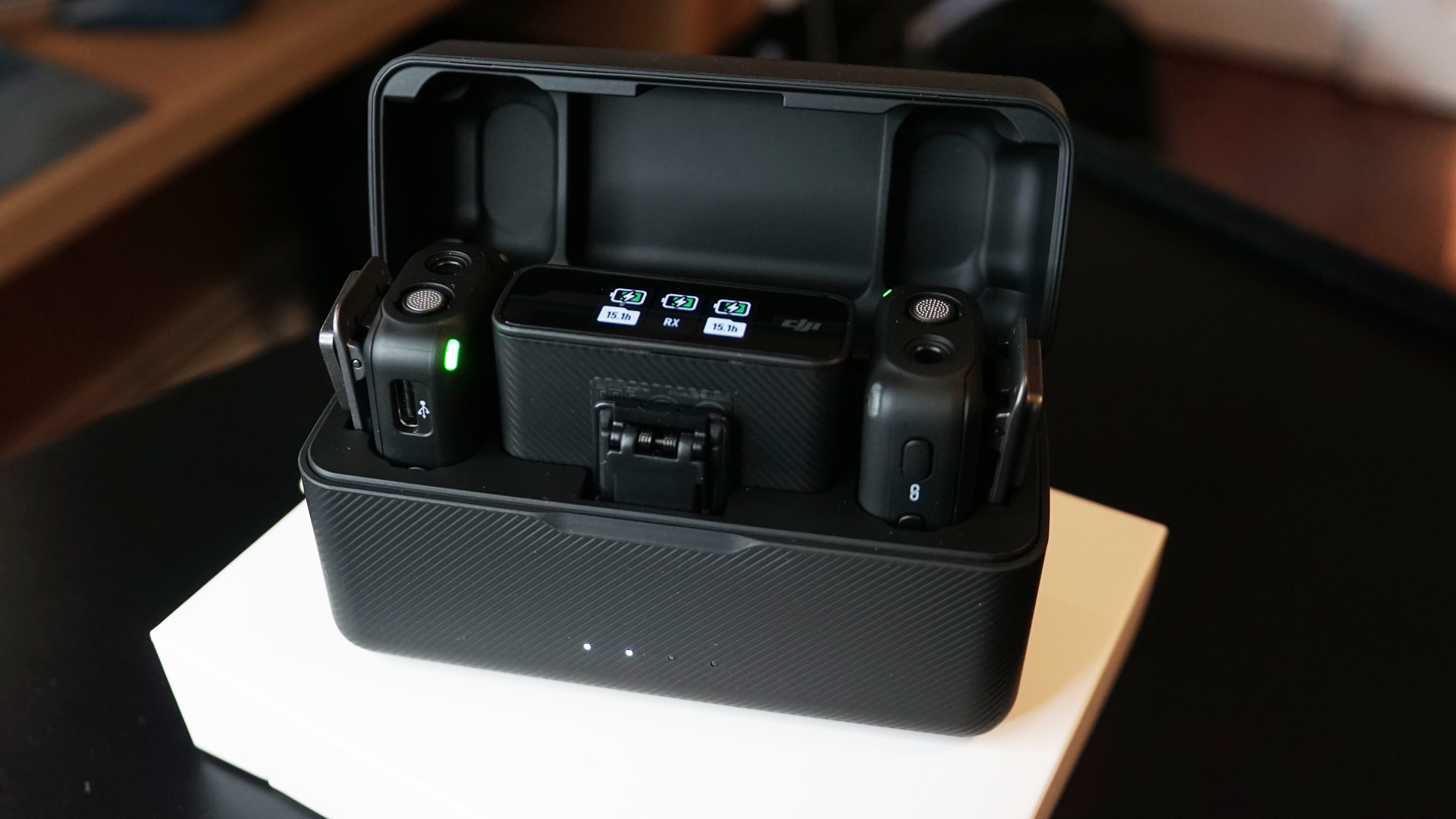
Design
The $329 / £289 / $509AUD set appears to think of everything. Inside the compact 4-in. by 2-in. x 1.5-in. case, which is charging all components and itself is recharged via USB-C cable, is a pair of wireless microphones, a compact wireless receiver, adapters for plugging the receiver into either an iPhone or an Android phone that suppers USB-C, powerful magnets that let you clip the mics to your shirt, and a DSLR hot-shoe adapter for the receiver.
The receiver even has an LCD touchscreen display that shows you, among in brilliant color audio pickup on both mics, charge status for the mics, its charge level and gives you access to a variety of settings. One thing I was a little surprised about is that there is no DJI Mic app. Virtually all of DJI's other gadgets work with an app. In a way, I'm relieved this doesn't need one.
Magnets, by the way, figure largely in this tiny system. The case is magnetized to hold the components in place when you're not using them. The tiny magnetic squares that start off holding onto the back of each magnetized mic clip (yes, you can just clip them to the top of your shirt color, but more on that later), are so strong that when one got misplaced on my metal table, I couldn't pry it off. I had to slide it to the edge.
Similarly, the magnet that holds the adapters in place makes it near impossible to remove them. I mean, thanks for the thoughtfulness, DJI, but maybe next time dial back the case magnetism just a bit.
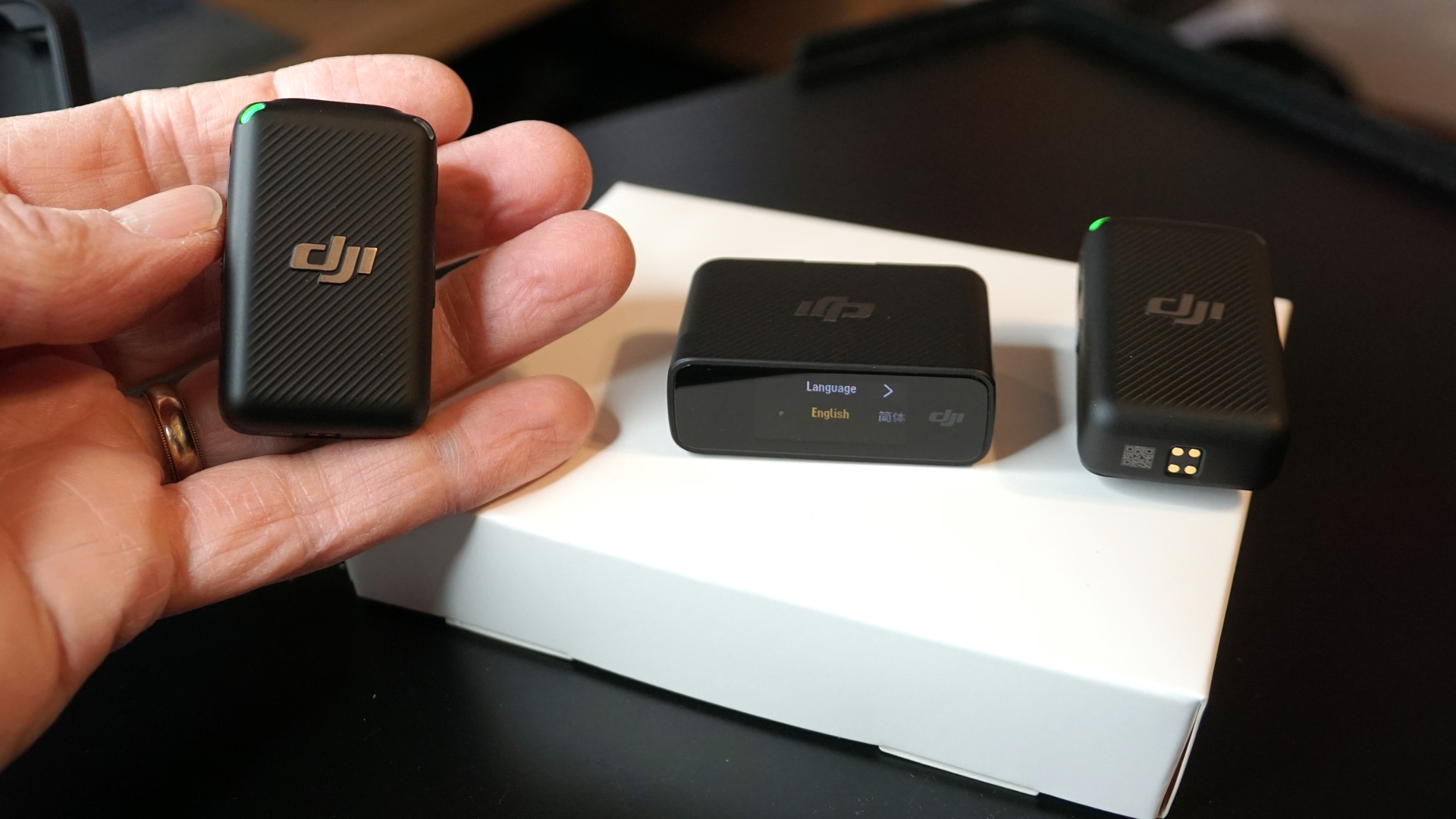
Features
The wireless mic units are fascinating bits of technology. They're a middle ground between a lav mic and the transmitter you might attach to the back of your pants if you're wearing a wired lav mic on TV.
There are no wires here, so the omnidirectional microphone and transmitter are squeezed into these roughly 1.75 in. by 0.75 in. by 0.5-in. mics. They can look a bit awkward hanging on your shirt, but you can also place it under clothing where it will still pick up sound. Each mic has just a few buttons for power, linking to the receiver, and starting recording.
The mics have 3.5mm jacks for connection to additional external mics (though they caution not to connect it to any powered mics with 24v or 48v power supplies).
The mic is flush against the housing, but there is room to attach, bayonet-style, an included, tiny fur windsock.
The receiver, which is slightly larger, albeit lighter, than each mic offers the touch screen on the face, a power button and USB-C data port on one side, and monitor and audio-out to camera jacks on the other. On the back are the charge points and a slot where you slide in the smartphone adapters. I like this last part but wish the adapters snapped into position when you slide them on. Instead, they still slide and often move out of alignment against the receiver when you plug the adapter into a smartphone.
Setup and performance
All of this might sound complicated but it's not. I scanned over all the instructions but then, growing impatient, slipped the iPhone adapter into the receiver, powered it up, and attached it to my iPhone 13 Pro, which asked if it was a headphone. I said it wasn't. I powered up both mics, grabbed one, and, while holding the thumbnail-sized magnet square on my shirt, attached one mic to my chest. Then I grabbed my wife and put the other mic on her.
The receiver warned me that it was only recording mono audio. That's a shame since the iPhone can record stereo, but I was still hopeful it might sound good, at least for voice recording (my main interest).
I opened the camera on my iPhone, selected video, hit record, and we started talking. My wife didn't even know what she was wearing. I tried to explain and then asked her to leave the room (the wireless mics have a 250m range). She complained she couldn't hear me. I yelled that it didn't matter, the mic should pick up her voice. She wandered around the house and then headed outside. Getting into the spirit of things, she started to sing. I prayed I was capturing it all.
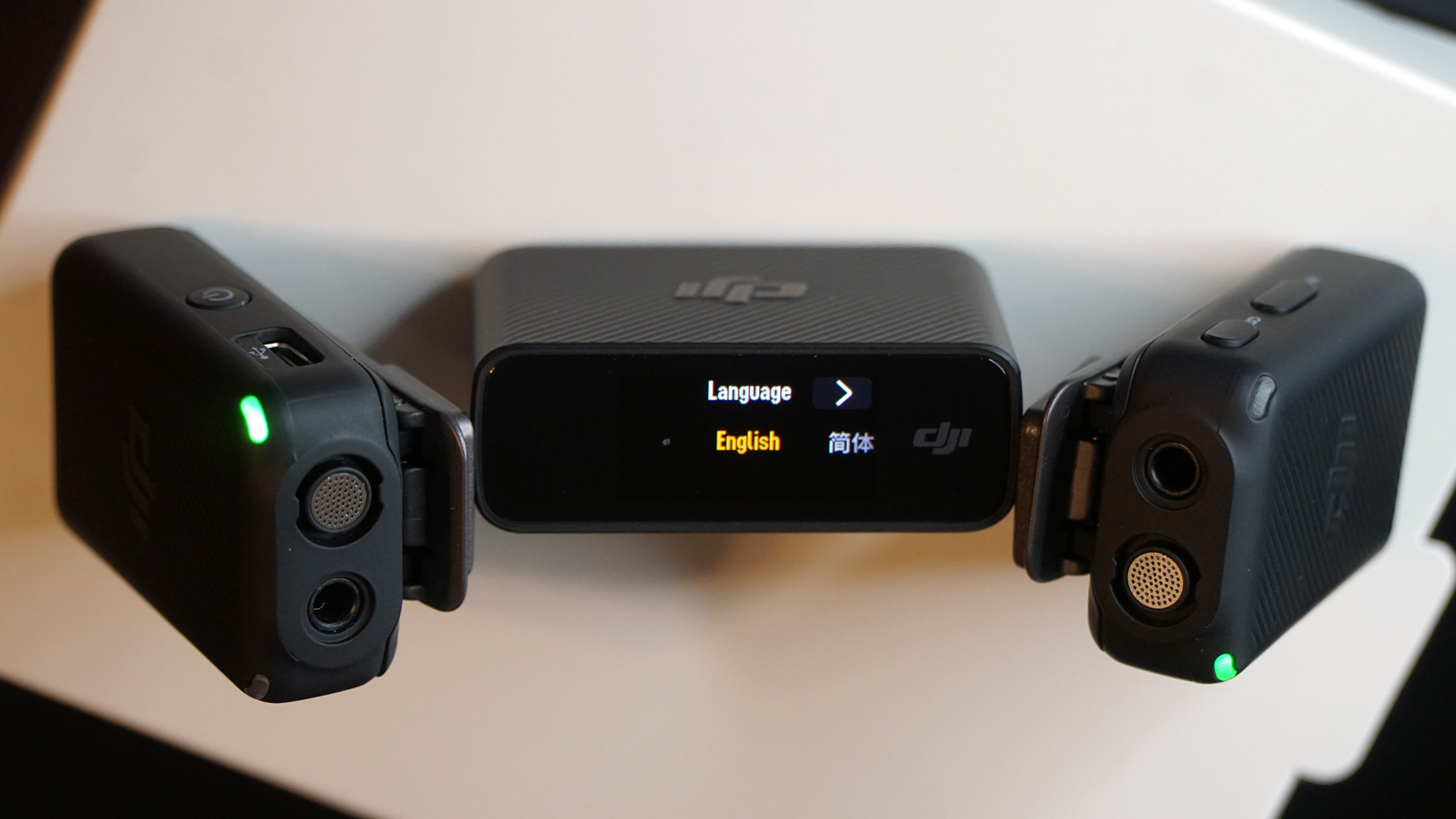
I stopped recording and removed the receiver from my iPhone (you can't playback the audio with it attached to the phone, but can listen after if you're wearing Bluetooth earphones). Then I hit play. I heard everything, every word I said and every one of my wife's utterances and, yes, her singing, too. It was all crystal clear and bright. Seriously, there wasn't a hint of distortion.
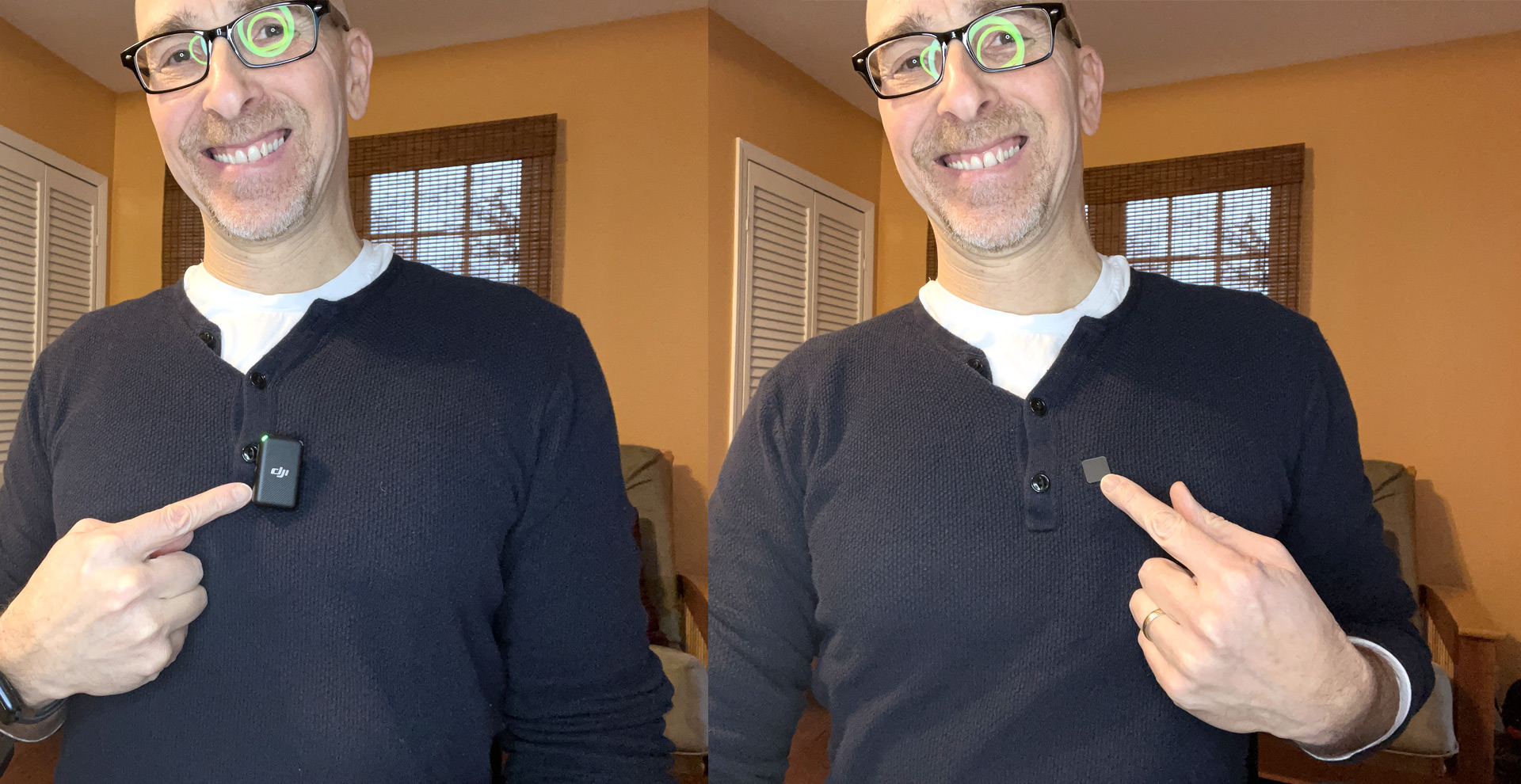
For my outdoor test, I attached the windsock as recommended by DJI. Then I attached the mic to the outside of my sweater and started walking and talking through New York City. I didn't shout, just spoke in a normal tone of voice (no one looked at me, this is Manhattan, after all). The DJI Mic did an excellent job of picking up both my voice and the appropriate level of ambient noise. None of it overpowered my voice, but I think you could tell I was walking and trotting through a city.
In another test, we put the mics under a thick denim shirt (under the pocket area, actually, doubling the layers of fabric) and under a sweater. Now only the tiny magnets were showing. For both tests, we ever wore our Pandemic-mandated face masks. The sweater's knit allowed more of the sound to come through to create a clear recording. The dual-layer of denim muffled the sound just a bit, but it was still pretty good.
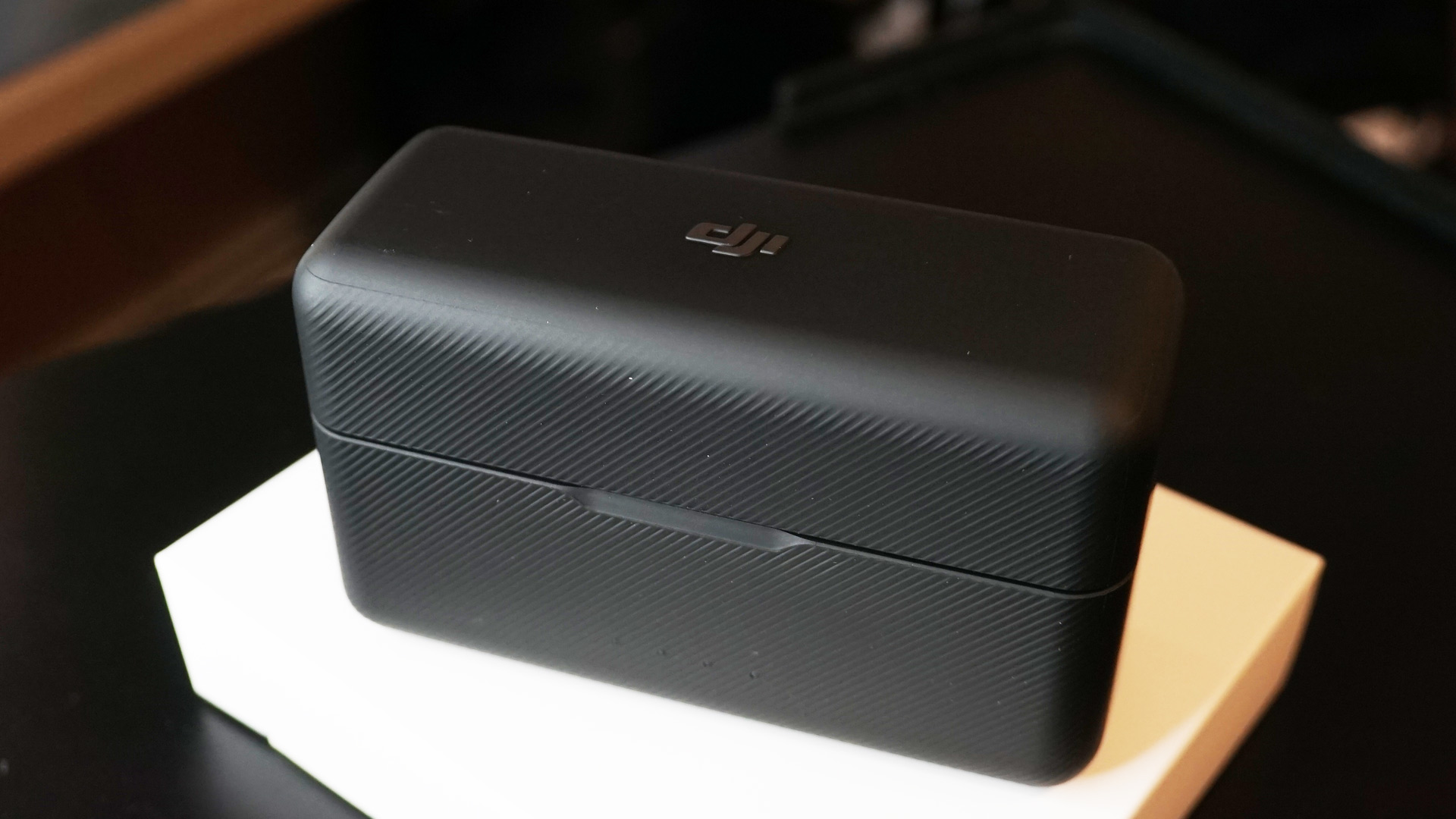
I keep thinking about what a godsend this kit would be for an amateur movie maker. No more complicated sound systems or expensive booms. Just an iPhone attached to a tiny receiver and to carefully hidden, yet powerful mics.
Obviously, you needn't use an iPhone. The system can connect directly to a camera, or the mics can be used without a camera. Each of the microphones has hours of internal battery life and 8GB of onboard storage, which offers about 14 hours of recording - the system will break up the recording files into 30-minute segments. To record on the devices, you press the record button once. The mic will vibrate and you'll see a red recording on the corner opposite a glowing green one (that indicates the mic is ready for use).
After you record, you can attach each mic (both have USB-C ports) to a computer to download them as 24-bit mono .wav files. After that, you have to format the storage on each mic using the Receiver.
If you do use the system with a camera, you'll want to use the touch screen to swipe down and slide over to the "S" for "stereo" setting. Through that tiny screen, you can also adjust Receiver Gain, Volume on the monitor line, and access full settings.
Final verdict
The weird case magnetic stuff and iPhone mono recording aside, I have to hand it to DJI. This is a tremendous first effort. The DJI Mic wireless dual-microphone system is well designed, sturdy, easy to use, works in a wide variety of situations, can attach to almost any metal serface, and records high-quality audio that can be used on your home movies, professional films, podcasts, and more. The set is well worth $329.

A 38-year industry veteran and award-winning journalist, Lance has covered technology since PCs were the size of suitcases and “on line” meant “waiting.” He’s a former Lifewire Editor-in-Chief, Mashable Editor-in-Chief, and, before that, Editor in Chief of PCMag.com and Senior Vice President of Content for Ziff Davis, Inc. He also wrote a popular, weekly tech column for Medium called The Upgrade.
Lance Ulanoff makes frequent appearances on national, international, and local news programs including Live with Kelly and Mark, the Today Show, Good Morning America, CNBC, CNN, and the BBC.
